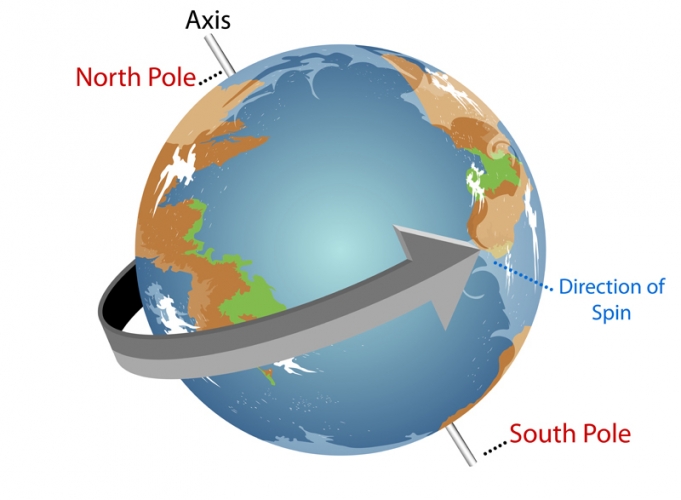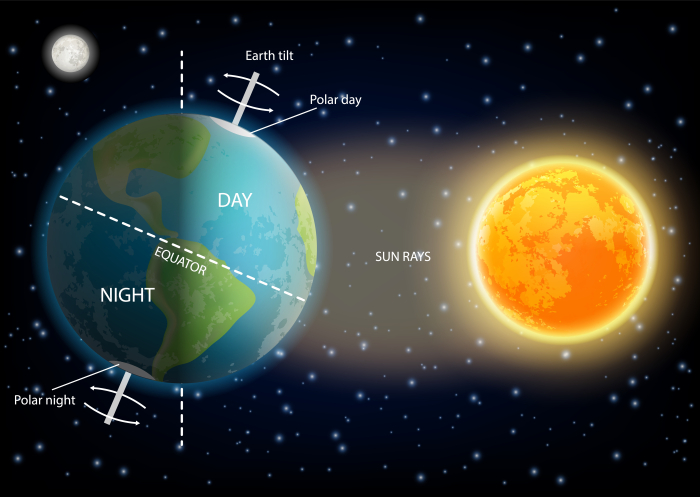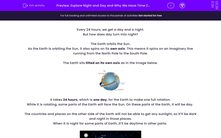Every 24 hours, we get a day and a night.
But how does day turn into night?
The Earth orbits the Sun.
As the Earth is orbiting the Sun, it also spins on its own axis. This means it spins on an imaginary line running from the North Pole to the South Pole.
The Earth sits tilted on its own axis as in the image below.

It takes 24 hours, which is one day, for the Earth to make one full rotation.
While it is rotating, some parts of the Earth will face the Sun. On these parts of the Earth, it will be day.
The countries and places on the other side of the Earth will not be able to get any sunlight, so it’ll be dark and night in those places.
When it is night for some parts of Earth, it’ll be daytime in other parts.

For example, when the United Kingdom is facing the Sun, it’s daytime for people living in the UK. People living on the other side of the world, like in Australia, will be in darkness and it’ll be night.
When it is 11 am and light in the UK, it is 8 pm and dark in Canberra in Australia.
Once the part of the Earth where Australia is located rotates to face the Sun, the parts where the UK is will rotate away from the Sun.

We have different time zones on Earth so that 12 pm is the middle of the daytime for everyone. This means that day times are always light and night times are always dark.
It takes the Earth 24 hours to do one full rotation, which is why one day on Earth is 24 hours long.
In this activity, you’ll answer questions about day and night.
.jpg)
You can look back at this introduction at any point by clicking on the red help button on the screen.







